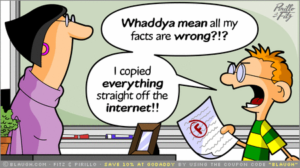
Learn how to avoid plagiarism and embrace ethical writing with practical tips for students to maintain originality and academic integrity.
Plagiarism. The word itself sounds intimidating, doesn’t it? As students, the idea of accidentally stepping into this academic minefield can be stressful. But don’t worry—avoiding plagiarism isn’t as complicated as it seems. With a bit of awareness and the right strategies, you can create original work that’s both ethical and impressive. Let’s break it down!
What Is Plagiarism?

Plagiarism happens when you use someone else’s ideas, words, or work without giving them proper credit. It’s like borrowing a friend’s sweater and pretending it’s yours—not cool, right? In academic terms, this can include:
- Copy-pasting text from a source without citation.
- Paraphrasing someone’s ideas too closely.
- Forgetting to credit images, graphs, or charts.
- Submitting someone else’s work as your own (hello, AI-generated essays!).
Why Does It Matter?

It’s dishonest: You’re essentially stealing someone else’s intellectual property.
It hurts your credibility: If you’re caught plagiarizing, it can damage your reputation and academic standing.
It hinders your learning: Plagiarism prevents you from developing your own critical thinking and writing skills.
Besides the obvious ethical concerns, plagiarism can have serious consequences. Schools and universities often have strict policies against it, leading to penalties like failing grades, suspension, or even expulsion. Plus, knowing how to write authentically builds critical thinking and communication skills—something no shortcut can teach you.
And let’s not forget real-life examples of plagiarism gone wrong. Take the case of a high school student in New York who was caught copying an entire essay from the internet. They not only received a zero but also faced public embarrassment when the school notified their peers and parents. Or consider the college freshman in Texas who submitted a research paper pulled straight from Wikipedia. They were expelled after a plagiarism detection tool flagged their work—a life-altering punishment for a rushed decision.
Top Tips to Avoid Plagiarism

1. Understand What Needs Citing
Read the instructions carefully: Pay attention to the requirements, citation style (MLA, APA, Chicago), and any specific guidelines.
Know your sources: Identify the types of sources you’re allowed to use (books, articles, websites, etc.).
Not everything requires a citation. Common knowledge—like the fact that water boils at 100°C—doesn’t need referencing. But if you’re using unique facts, statistics, or someone’s interpretation of events, always credit the source.
2. Use Your Own Words
When taking inspiration from a source, put it into your own words instead of copying verbatim. But be careful—simply swapping out a few words isn’t enough. Make sure the structure and phrasing are uniquely yours.
3. Master the Art of Paraphrasing
Paraphrasing is more than just rewording. It involves understanding the original idea and expressing it in a way that aligns with your voice. For example:
- Original: “The Industrial Revolution marked a turning point in history, leading to significant technological and social changes.”
- Paraphrased: “The Industrial Revolution was a pivotal era that transformed society through advancements in technology and shifts in social structures.”
And yes, even paraphrased content needs citation!
4. Cite Sources Correctly
Every institution has its preferred citation style, like MLA, APA, or Chicago. Make sure you know which one you’re supposed to use. Tools like EasyBib and Citation Machine can simplify this process. When in doubt, cite it out—it’s better to over-cite than under-cite.
5. Use Quotation Marks for Direct Quotes
When using someone’s exact words, enclose them in quotation marks and include a citation. For example:
“Plagiarism is the use of another’s work without proper acknowledgment” (Smith, 2023).
This makes it clear which part is directly borrowed.
6. Keep Track of Your Sources
While researching, maintain a running list of your sources. This will save you from the last-minute scramble of trying to remember where you got your information.
7. Use Plagiarism Detection Tools
Before submitting your work, run it through tools like Turnitin, Grammarly, or Quetext. Many universities and colleges provide access to tools like Turnitin. These platforms highlight areas that might need revision, ensuring your work is plagiarism-free. Review the report carefully. Understand the highlighted sections and make any necessary corrections.
8. Don’t Procrastinate
Rushing to meet a deadline is a surefire way to make mistakes. Give yourself enough time to research, write, and review your work. Trust me, your future self will thank you.
Common Misconceptions About Plagiarism

- “I changed a few words, so it’s fine.” Nope! That’s still plagiarism unless properly cited.
- “If it’s on the internet, it’s free to use.” Wrong again. Most online content is copyrighted and needs acknowledgment.
- “I’ll just use AI to rewrite it.” AI tools can help, but they’re not foolproof. Always double-check and cite sources appropriately.
Final Thoughts
Avoiding plagiarism isn’t just about following rules—it’s about respecting the hard work of others and building your credibility as a writer. With these tips in mind, you’ll be well-equipped to create authentic, original work that you can be proud of. So, next time you hit the books, remember: give credit where it’s due, and let your own voice shine!
Ready to elevate your learning journey? Contact Young Scholarz today and transform education into an exciting adventure! At Young Scholarz, we specialize in helping students excel not only in English but across all IB and IGCSE subjects. By focusing on your unique strengths and providing personalized strategies, we ensure success that goes beyond grades. Whether it’s boosting academic performance, building confidence, or honing critical skills, we’re with you every step of the way!
Happy writing!






